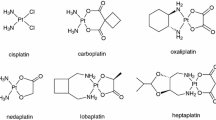Abstract
In a previous paper, the exact conditions under which the radioactive drug 2-methyl-6,7-ditritio-1,4-naphthaquinol bis disodium phosphate could be selectively incorporated into HEp/2 cells were reported. This work has now been extended and suggests that the selective property associated with two human tumour cell lines established in culture, HEp/2 and HeLa, and two forms of mouse ascites tumour cells propagated in vivo, is a metabolic conversion of the drug (priming stage) to a form which can probably be freely incorporated by all cell types. It is suggested that the observed variations in uptake of label with changes in pH, cell concentration and the inorganic phosphate concentration of the medium indicate that the “priming” stage is critically dependent on the conditions of the experiment.
Work with the non-radioactive analogue, Synkavit, indicates that under conditions where the drug is incorporated selectively into cells, incubations in excess of 20 minutes cause a large percentage of the population to lose its reproductive integrity.
Similar content being viewed by others
Rights and permissions
About this article
Cite this article
Dendy, P. Further Studies on the Uptake of Synkavit and a Radioactive Analogue into Tumour Cells in Tissue Culture. Br J Cancer 24, 817–825 (1970). https://doi.org/10.1038/bjc.1970.96
Issue Date:
DOI: https://doi.org/10.1038/bjc.1970.96
- Springer Nature Limited




